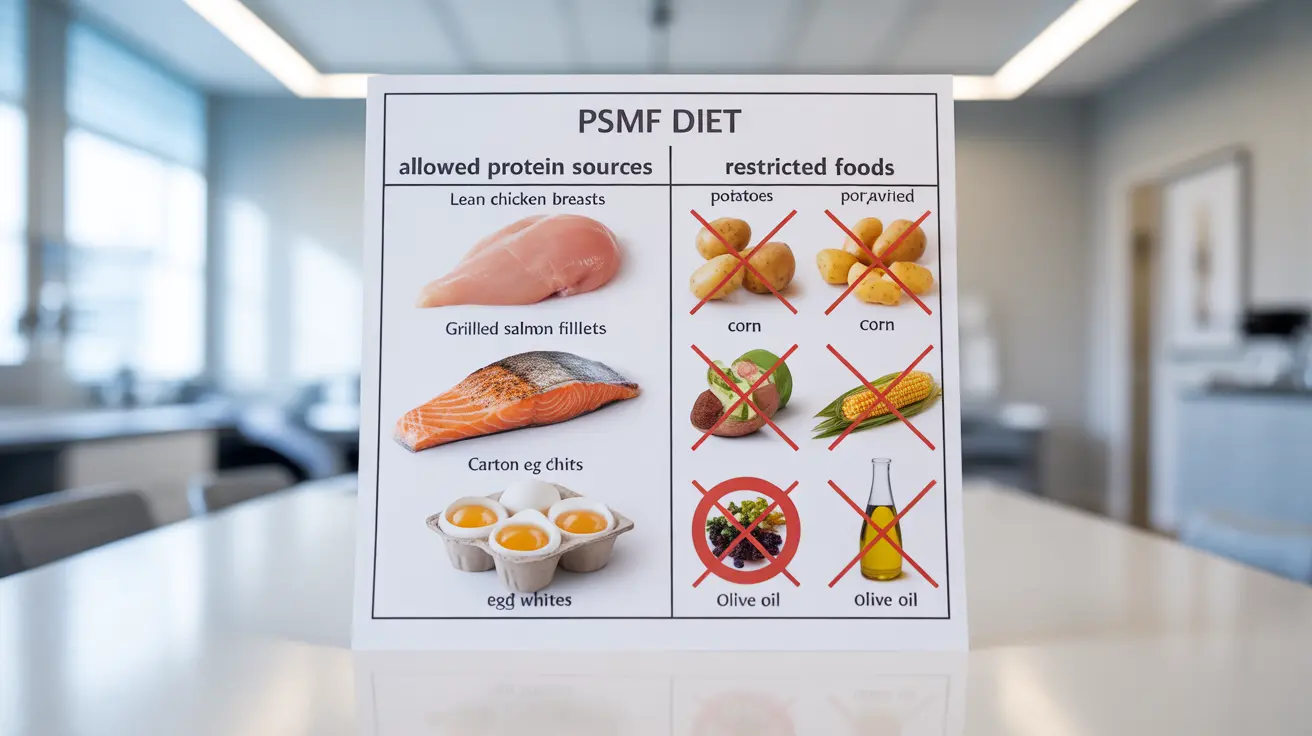The protein-sparing modified fast (PSMF) diet is an aggressive weight loss approach that combines very low-calorie intake with high protein consumption. This medically supervised dietary protocol aims to preserve muscle mass while promoting rapid fat loss through severe caloric restriction. While effective for some individuals, it's crucial to understand both its benefits and risks before considering this intensive weight loss method.
This comprehensive guide explores how the PSMF diet works, its structure, potential benefits, risks, and why medical oversight is essential for anyone considering this approach to weight loss.
Understanding the Protein-Sparing Modified Fast
A protein-sparing modified fast is a specialized form of very low-calorie diet that typically provides between 800-1000 calories per day, with the majority of calories coming from lean protein sources. The diet severely restricts carbohydrates and fats while maintaining adequate protein intake to prevent muscle loss during rapid weight loss.
How the PSMF Diet Works
The primary mechanism behind the PSMF diet involves creating a significant caloric deficit while providing enough protein to preserve lean body mass. When carbohydrate intake is dramatically reduced, the body enters a state of ketosis, where it begins burning stored fat for energy. The high protein intake helps maintain muscle tissue during this process.
Key Components of the Diet
- Protein intake: 1.2-1.5 grams per kilogram of ideal body weight
- Minimal carbohydrate consumption (typically under 20-50 grams daily)
- Very limited fat intake
- Essential vitamin and mineral supplementation
Allowed Foods and Dietary Structure
The PSMF diet focuses primarily on lean protein sources while severely limiting other food groups. Here are the main components:
Permitted Foods
- Lean chicken and turkey breast
- Fish and seafood
- Egg whites
- Lean beef cuts
- Low-fat dairy products
- Limited vegetables
Restricted Foods
- Oils and fats
- Starchy vegetables
- Grains and cereals
- Fruits
- High-fat dairy products
- Nuts and seeds
Medical Supervision Requirements
Medical oversight is crucial during a PSMF diet due to its restrictive nature and potential health risks. Healthcare providers typically monitor:
- Electrolyte balance
- Kidney function
- Heart health
- Nutritional deficiencies
- Mental well-being
Duration and Transition Phases
The PSMF diet is typically implemented in phases, with the intensive phase lasting between 8-12 weeks, depending on individual factors and medical supervision. After the initial phase, a carefully planned transition period helps prevent weight regain and establishes sustainable eating habits.
Frequently Asked Questions
What is a protein-sparing modified fast (PSMF) diet and how does it work for weight loss?
A PSMF diet is a very low-calorie, high-protein dietary approach that maintains muscle mass while promoting rapid fat loss. It works by creating a significant caloric deficit while providing adequate protein (1.2-1.5g/kg of ideal body weight) to prevent muscle breakdown during weight loss.
What are the health benefits and potential risks of following a protein-sparing modified fast diet?
Benefits include rapid weight loss, preserved muscle mass, and potential improvement in obesity-related conditions. Risks include electrolyte imbalances, gallstones, fatigue, mood changes, and nutritional deficiencies. This is why medical supervision is essential.
How is a protein-sparing modified fast diet structured and what foods are allowed or avoided?
The diet primarily consists of lean protein sources like chicken breast, fish, and egg whites, while severely restricting carbohydrates and fats. Most vegetables are limited, and foods high in fat or carbohydrates are eliminated. Supplements are typically required to prevent nutritional deficiencies.
Why is medical supervision important when doing a protein-sparing modified fast?
Medical supervision ensures safety by monitoring vital signs, blood work, and potential complications. Healthcare providers can adjust the protocol based on individual responses and ensure proper supplementation while watching for adverse effects.
How long can someone safely stay on a protein-sparing modified fast diet and what happens after this phase?
The intensive phase typically lasts 8-12 weeks, followed by a carefully structured refeeding phase. After completing the PSMF, individuals transition to a balanced, sustainable eating plan to maintain weight loss and prevent rebound weight gain.




